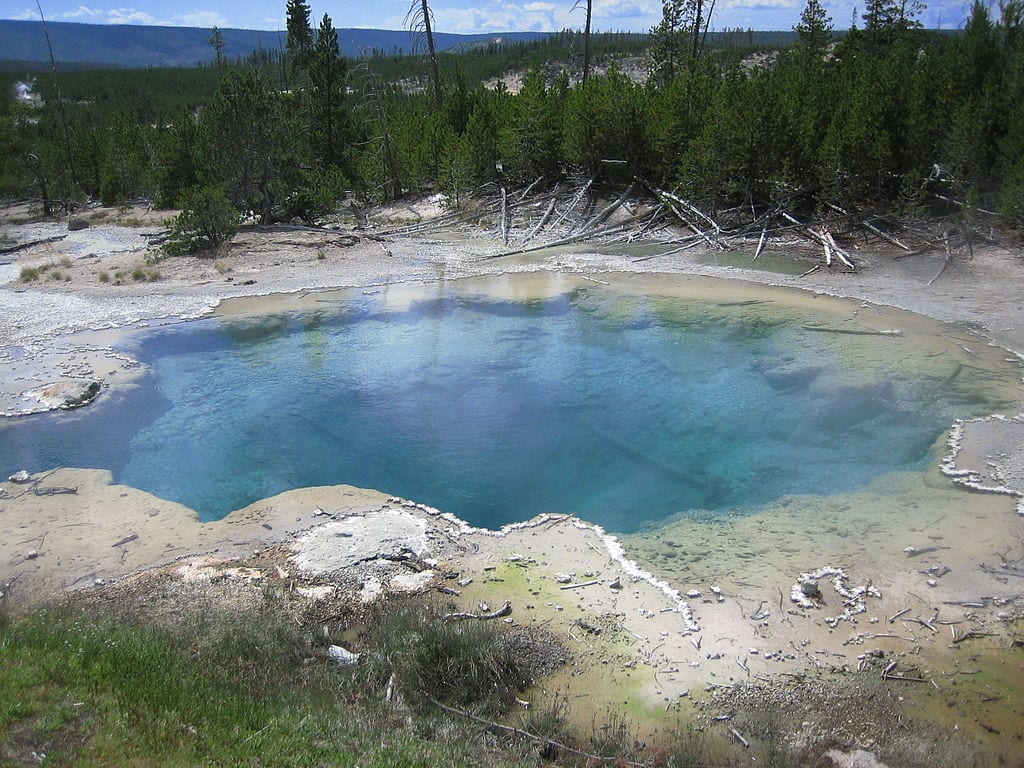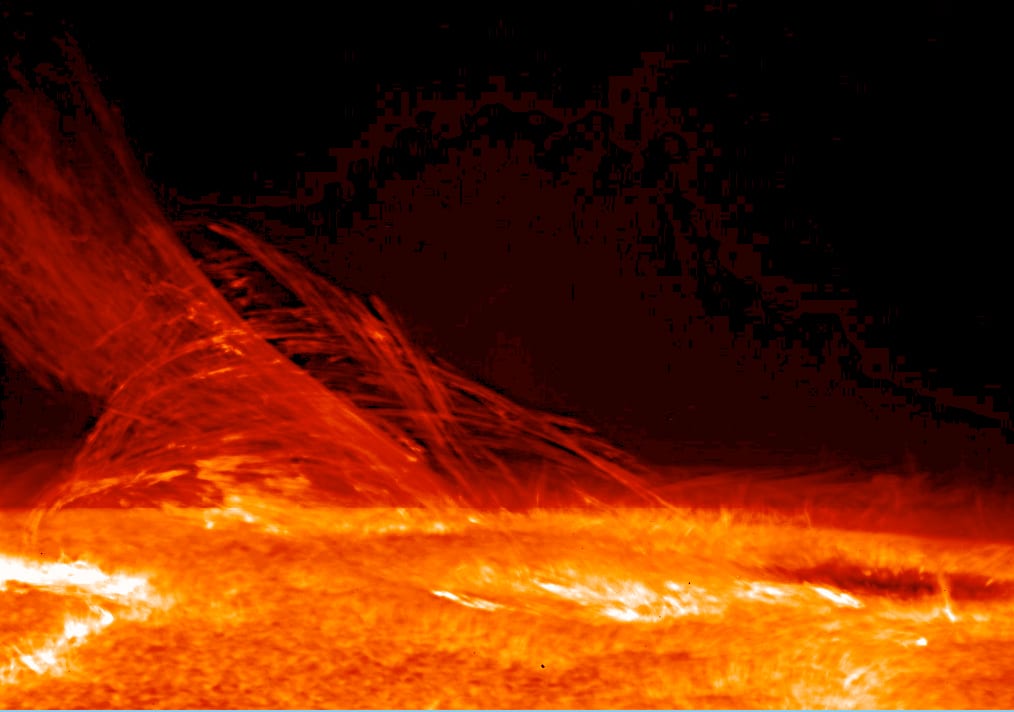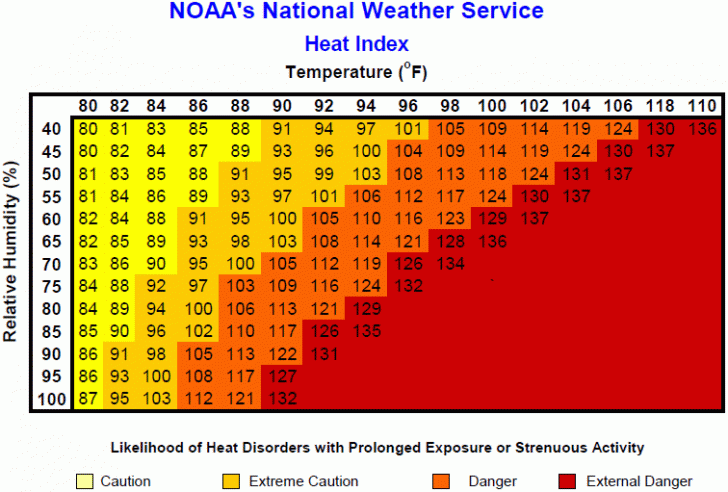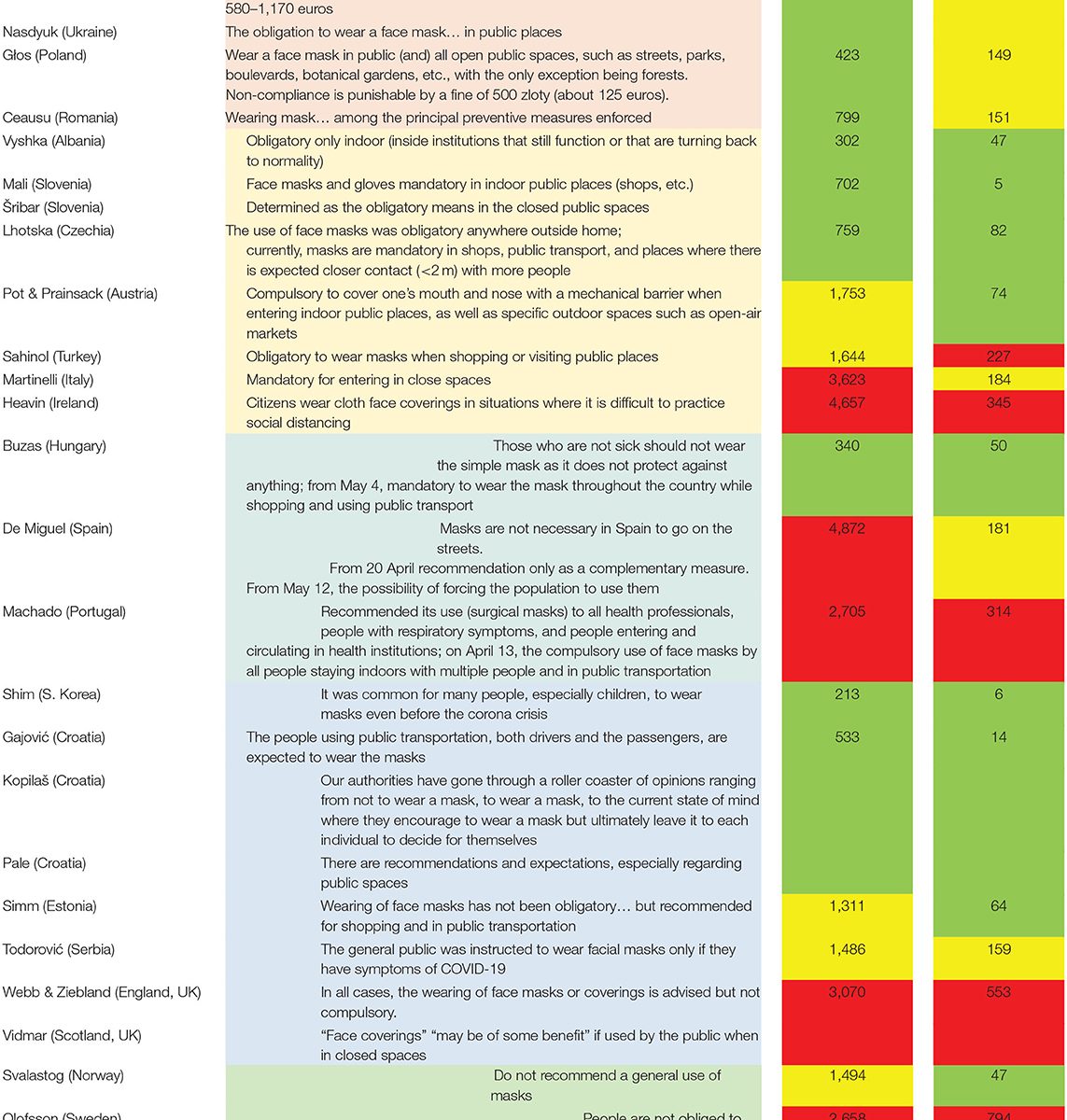As global temperatures continue to rise, heat waves are becoming more frequent and severe, causing concern for many. The increasing intensity and unpredictability of these heat events not only affect our comfort but also pose significant health risks. Here are some startling facts about heat waves and their impact: 1. Deadlier Than Severe Weather: Heat … Continue reading The Rising Threat of Heat Waves: 6 Facts
Desert Dwellers Break Down The Daily Facts Of Life They Face
Some months ago I found myself in El Paso, Texas. It was a fun enough time.
But let me tell you something—as a child of the Northeast, I don’t think I would enjoy living in the desert.
Nothing about the desert seems fun to me.
The idea of having the sun beating down on me all the time? I’m good, thanks.
Oh, there were no natural windbreaks out there, so sand just got everywhere whenever the wind picked up. That wasn’t great.
I mustn’t forget to mention the random lizards and scorpions that I’d see on the side of the road.
Or the spiders. Dear God, the spiders.
I guess I’m just accustomed to not having to think about animals all up in my space living in a Northeastern city. And I think I like it that way.
But there are plenty of people out there who live in these environments and would think I’m crazy for feeling the way I do!
They told us all about what it’s like living out there after Redditor Casual_WWE_Reference asked the online community:
“People who live in desert towns or cities, what are some everyday ‘facts of life’ about living in the desert that people who live in other places wouldn’t know?”
“And they are really freaking annoying.”
“Tumbleweed is not just in the cartoons. And they are really freaking annoying. Roadrunners are also around and are pretty cute. Coyotes party and sing in groups at night, and sound creepy as hell.” ~ sonictower
“Every now and then…”
“Every now and then we get a big wind storm that piles up the tumbleweeds in people’s yards. Imagine coming home from work and having tumbleweeds piled up to your roofline.” ~ elWattully
“Always wear a wide-brimmed hat.”
“Always wear a wide-brimmed hat. Long-sleeve T-shirts are underrated. Sunscreen. Lots of sunscreen.”
“Always have water on hand. Watch for snakes. Learn about heat exhaustion, heat stroke, and their respective symptoms.” ~ ClickBang911
“In the summer…”
“It’s dangerous.”
“In the summer we are often unable to go outside because 110-120 degree temps with little vegetation to absorb it will lead to heatstroke, and quickly.”
“Animals do not seek out the midday heat, and humans who think we’re somehow exempt from that will get sick.”
“Adobe walls keep the heat out well but are hard to put nails into. Use 3M strips? Well, they melt. In my office, I usually have to replace broken frames every time the A/C shuts off because everything falls off the wall.” ~ [deleted]
“After a few days…”
“A couple of years after college, my friends and I spent a week in Big Bend National Park. It’s a large park in southwest Texas on the Mexican border, mostly desert with mountains, and the Rio Grande.”
“To give you an idea of the size of the park, our campsite was 70 miles from the park entrance.”
“After a few days driving around out there, we noticed that people were on another wavelength from what we were used to in the city and suburbs.”
“Folks you met at a store would give you a five-minute conversation. People driving by would wave. We would wave back because you could go half an hour without seeing another soul. People are wired to be social, and being completely isolated changes how you see others.”
“The loneliest I have ever felt was in downtown Tokyo on the streets of Shibuya, surrounded by thousands. Alone in the desert, people start to see each other.” ~ Thompson_S_Sweetback
“The entire reason…”
“It gets cold at night. The entire reason the desert is tolerable once you can provide shelter and water is almost exclusively because no matter how hot it gets, it’s usually around 50, 60 at night. Sand, dust, and dirt get everywhere.” ~ BigGoose478
“Big scorpions…”
“Big scorpions are scary, little scorpions will put you in the hospital. Incidentally, Fallout: New Vegas lied to you – the bark scorpion is actually both the smallest common scorpion in Arizona, and it’s also the most dangerous.”
“Learn to identify your spiders; the most dangerous spiders are not particularly predatory and will leave you alone, but you need to be able to ID your southern black widow, your Arizona brown spiders, and brown recluse spiders.”
“A brown recluse spider can cause organ failure, but a hobo spider, which looks really similar is harmless to the point that scientists are now assuming incidents attributed to the hobo spider are actually just misidentified brown recluse spiders.”
“There’s no hard, fast rule with snakes. Rattlesnakes want you to eff off. They tend to avoid humans for obvious reasons but that doesn’t mean you can’t stumble across one taking a nap.”
“There’s no cardinal rule with the danger of snakes at large, but on the off chance, a snake with black, red and white striping decides to taste test you, go to a hospital pronto.”
“The Arizona coral snake isn’t actually that dangerous – relative to rattlesnakes – but it’s also the one that’s really easy to identify.”
“Despite the cutesy name, Gila Monsters are dangerous. They’re not terribly fast but they’re pretty chompy and it’s the one case where a native lizard in the United States is also venomous.”
Other bugs: Arizona gets killer bees, and a particularly large eight-inch centipede called the Desert Centipede can also give a painful bite.” ~ BigGoose478
“When you’re choosing…”
“When you’re choosing where to place your garden, remember that ‘plant in full sun’ means full sun in the Midwest. That’s really not the same in southern New Mexico, where opening the front door is like checking if the lasagna is ready.”
“I have shade cloth over everything in our vegetable garden.” ~ DanYHKim
“Logistically…”
“Logistically, unless you have cloth seats in your car or seat covers of some kind, you need a towel to sit on your car seats or you’ll burn your legs. Using oven mitts to drive is not needed now but was crucial where we were in Arizona in the 70s.”
“Wild burros would walk through your yard at night, and sometimes would let you hand feed them. Carrot tops were especially liked!” ~ ReadOnTheCrapper
“I grew up…”
“I grew up in the Pacific Northwest and now live between Death Valley and Las Vegas in a rural low-elevation area. I can’t really safely go outside for what feels like half of the year.
“The temperatures where I live are insane, and they’re getting worse every year. I lost count of how many days we had over 120°F this past summer.”
“I have to physically pick up my dog to take her to the potty area. Some very cheap shoes will melt on the pavement on particularly bad days, so you can only imagine what that must be like for dogs’ feet.”
“Ground temperature is always much higher, especially asphalt. My rule of thumb is to usually take my foot out of my shoe and test it if I’m not too sure, if I wouldn’t walk on it then I won’t make my dog walk on it.” ~ Almadenn
Okay, after reading these, it seems clear to me that we shouldn’t be living out in the desert.
Why?
Why are we doing this to ourselves?
Safe to say I can’t handle it.
I don’t think I’d want to worry about my shoes melting… the humidity in the Northeast is enough!
This is Officially the Hottest Place on Earth
The past ten years were the hottest in recorded history, and it has seen record-breaking average yearly temperatures and single-day temperatures in places across the globe. This is largely due to global climate change, and it’s a dangerous trend.
However…
According to the World Meteorological Organization, the hottest temperature ever recorded was a sweltering 134 degrees Fahrenheit at Furnace Creek in Death Valley, California, way back in July 10, 1913.
Up until 2012, the record on file – 136.4 degrees Fahrenheit – occurred in El Azizia, Libya, and was recorded in 1922. But it was disqualified 90 years later because, according to the Guiness Book of World Records, the temperature could have been off by up to seven degrees due to the type of surface on which the measurement was taken.
Dallol, Ethiopia, is considered the hottest regularly inhabited place.

Photo Credit: Pixabay
Back to Death Valley. Air temperatures there typically reach 120 degrees due to its geographic location and boiling desert environment. The area receives less than three inches of average annual rainfall, and the sun beats down on the ground – 190 feet below sea level and enclosed by mountains.
So, in Death Valley, hot air rises and gets trapped by the surrounding mountain ranges. Then it cools and falls back into the valley. As it falls, where it’s heated again by then sun and the high air pressure down on the valley floor. That’s how the area holds the record for highest recorded air temperature.
Death Valley, though, is not the only hot spot around.

Photo Credit: Billy Hathorn
In Yellowstone National Park, the geothermal pools often reach 250 degrees Fahrenheit and above. According to National Geographic, vents on the ocean floor release liquids at 750 degrees Fahrenheit and higher. The Earth’s core is estimated to have a temperature of a super scorching 11,000-degrees. In our solar system, scientists say the hottest place is the sun’s core which is about 15 million Kelvin, or roughly 26 million degrees Fahrenheit.
If you’re looking for the hottest location in the universe, that seems to be, surprisingly, just outside of Geneva, Switzerland. At the Large Hadron Collider, scientists and engineers smash atoms in their experiments.

Photo Credit: Flickr
According to Inside Science News Service, the temperature inside the equipment reaches an incredible 7.2 trillion degrees Fahrenheit (if just for short bursts).
That’s a valid excuse for sweating.
The post This is Officially the Hottest Place on Earth appeared first on UberFacts.
Why Is the Sun Hot If Space Is so Cold?
The solar system is pretty extreme as far as temperatures go. At its core, our sun registers at around 27-million degrees Fahrenheit, but its surface is no slouch temperature-wise either: it’s clocks in at about 10,000 degrees.
So is it kind of weird that in outer space, away from the sun and the mild atmosphere of Earth, the temperature measures -455 degrees?
What’s really going on out there?
Let’s go over some basic physics. Heat is actually energy, radiating as an infrared wave (like light, but below the spectrum of what’s visible to human eyes) that moves from its source (ie, the sun) to…everything else. As infrared radiation comes into contact with molecules, it imparts some of its energy, causing them to become excited and heat up. But only the matter in the path of the radiation will heat up –any matter outside of the path will remain cold. Any void the energy travels through will also remain cold because there’s nothing in it to get warmer.
Consider the planet Mercury. As the planet turns and night falls, the newly dark surface plunges in temperature to 1000 degrees colder than the radiation-exposed day side.

Photo Credit: NASA
Earth, in contrast, feels warm even if you’re standing in the shade. Summer nights stay warm too. Even night during the wintertime in Canada is warmer than most other places in our solar system at night (withe some exceptions, notably Venus). This is due to the sun’s radiation causing convection and conduction.
When radiation hits molecules, the molecules pass that energy to others next to them, which then pass their extra energy on to their neighbors. This chain reaction is conduction. Areas outside of the path of radiation are warmed this way – so night stays warm (relatively speaking).
But in empty space there are fewer molecules that are too far apart to transfer energy if they are heated. Conduction, under these circumstances, can’t happen. This is the void issue we touched on earlier.
Convection, the process by which heat moves via a fluid (ie air or water), also can’t happen in low-gravity, molecule-scarce space.
Engineers at NASA takes all this in consideration when they are designing spacecraft for exploration. Out in space, probes and other equipment are exposed to temperatures either boiling hot or icy cold, depending on where they’re traveling in relation to the path of the sun’s radiation.
The closest any spacecraft has gotten to the sun was the Parker Solar Probe, which came within 15 million miles. This was only possible because of the specially designed heat shield that kept the rest of the probe cool.

Photo Credit: NASA
The ability to adjust to the rising and dropping in temperatures to the tune of hundreds of degrees Fahrenheit is a necessity for surviving the extremes of space.
Luckily, our balmy little home planet manages it for us surprisingly well.
The post Why Is the Sun Hot If Space Is so Cold? appeared first on UberFacts.
This Is Why Humidity Make Us Feel Hotter
The actual temperature outside is around 91 degrees as I write this, but the “heat index” is about 106 degrees – but what is it about the extra water in the air that makes it feel (absolutely, one-hundred-percent) unbearable outside?
Well, part of that reason can be explained by our bodies natural cooling system – sweating.
Sweat works to cool us by evaporating from our skin, which wicks away heat in the process, but when the air outside is too moist, the sweat drips of us instead of evaporating.
It leaves you just as smelly, but not nearly as cool.
The National Weather Service has a handy chart to help weather people determine the relative humidity (the amount of water the air can hold, based on temperature) and compute the “heat index,” too.
In 1979, Robert G. Steadman, an academic textile researcher, wrote a paper that laid out the basic factors that affect how hot a person felt under a given set of conditions, and the resulting chart is basically being used to calculate heat index today.

Image Credit: Wikimedia Commons
The research relies on the idea of a “typical” person – 5’7, 147 pounds, wearing long pants and a short-sleeved shirt, and walking over 3mph in the shade (enjoying a light breeze), so while it may vary slightly from person to person, probably not enough to make a huge difference on any given day.
The National Weather Service has a four-tiered system to tell people how dire the heat situation is out there, with days with a heat index over 130 classified as “extreme danger,” and “danger” days ranging from 105-130.
On those days, prolonged exposure to the heat and humidity can cause sunstroke, heat cramps, heat exhaustion, and heat stroke, so you know. You probably want to stay inside.
I’ll be here on my couch, praying my air conditioner makes it through another six weeks of summer weather.
The post This Is Why Humidity Make Us Feel Hotter appeared first on UberFacts.
This Is How People in Great Britain Manage During the Relentless Heatwave
Whether you buy the (verified) science of climate change or prefer to live with your head buried in the sand, there’s no denying that it has been H-O-T in the United Kingdom this summer.
Like…it’s never actually been this hot before, and people don’t know how they’re supposed to live with it.
Heathrow Airport saw a record-setting July temperature of 98.4 degrees while Cambridge hit triple digits for only the second time in the history of recorded temperatures, and England wasn’t alone – France shattered its previous high record with a temperature of 108 degrees, and countries across Europe sweltered under the same kind of conditions.
Residents have had to think on their feet, and if the 20 pictures below prove anything, it’s that people are endlessly creative.
Whether or not the solutions are sustainable (or effective) well… you can decide for yourself.
19. Sun’s out, guns out.
When your manager says it’s still smart dress code at work #heatwaveuk pic.twitter.com/7tUG6caIwb
— K. Jones (@HennyInMyCereal) July 24, 2019
18. Watch your step.
Tales of heatwave madness – the floor is lava
Posted by Mouki Koutouki on Thursday, July 25, 2019
17. With age comes wisdom.
My dad is my hero #heatwaveuk pic.twitter.com/04HlcyaswQ
— Helen (@Helenkathleenpr) July 25, 2019
16. We’re not dramatic or anything.
Welcome to death row
pic.twitter.com/CJGh20KdHN
— Mr Richards
(@flyguyrichards) July 25, 2019
15. All helpful advice.
The accuracy is real. #londonheatwave pic.twitter.com/YYR0TYOvF7
— Chloe Tribbiani (@Ch10e) July 25, 2019
14. I think it’s going to last.
All weekend #heatwave pic.twitter.com/HY9zSPBXis
— Menswear Stylist l NYC (@tarevamylia) July 19, 2019
13. Save yourself.
Phew, Bob. Is it me or is it hot out here? Bob? Bob?…#heatwaveuk pic.twitter.com/mym3nlczpo
— Not The Droid You're Looking For (@SeaThreePeeO) July 22, 2019
12. The old “pretend you’re at the beach” trick.
Sun, deckchair, beachball, sand (from a bag) middle of Blackfriars bridge, as you do.
Posted by Tom Evison on Wednesday, July 24, 2019
11. You know it’s bad when not even the electronics can handle it.
Whoops… coverage where I live is super dodgy so I often put my phone near the window…. #heatwave #overheated #iPhone pic.twitter.com/Pg2tYdkLoT
—
Natalie
Dewhurst
(@NatDewhurst) July 24, 2019
10. No one accuses cats of being dumb.
This calls for drastic action #hottestdayoftheyear #londonheatwave pic.twitter.com/kJPAEdbhpx
— Gladstone (@TreasuryMog) July 25, 2019
9. What even is dry skin?
Nice to know there’s one place on my body that I didn’t sweat from during this heatwave from TrollXChromosomes
8. Wanna get away?
Easy Jet nailing their advertising
Posted by Luke Brancaccio on Thursday, July 25, 2019
7. We just hug all day long.
Let me introduce you to Charlene, I’m madly in love with her and am planning our wedding as we speak. She might seem a bit cold hearted but she makes me feel great and that is what matters. #HEATWAVE2019 #melt2019 #hottestdayoftheyear pic.twitter.com/ji6GtOc8hm
— Filip Verloy (@filipv) July 24, 2019
6. Desperate times.
5. He will fight you for that outlet.
4. Everyone standing around was wondering if they could get away with doing the same.
This dog is how we all feel #heatwave pic.twitter.com/98PezkhqpD
— Holly Bourne (@holly_bourneYA) July 23, 2019
3. People have come for the essentials.
Heatwave : No ice cream…This is a National Emergency !!!
Posted by Krzysztof Jan Darewicz on Thursday, July 25, 2019
2. My kingdom for some water.
Me & this pigeon on the hunt for a cooling dip together today
Seems mean to turn off the fountains for our feathered friends in this hot weather no?! #londonheatwave #summershere pic.twitter.com/W9DobHedUg
— Phoebe Liebling (@PTLiebling) July 24, 2019
1. Tips and tricks.
#londonheatwave you'd be amazed how effective it is if you just pop some frozen water in a bottle in front of a fan pic.twitter.com/d6nG2ZnU6g
— Ed (@thing_stuff) July 25, 2019
Stay cool out there!
The post This Is How People in Great Britain Manage During the Relentless Heatwave appeared first on UberFacts.
During WWII, Russian soldiers…
During WWII, Russian soldiers took “heat pills” that kept them warm in the winter; however, they would also lose weight despite eating well. 2,4-dinitrophenol spikes metabolic rate as potential energy is lost as heat—it is banned as a weight loss aid (U.S.) as overdose can cook people to death.
This Is Why You Shouldn’t Leave Water Bottles in Your Hot Car
There are a lot of things you shouldn’t leave in a hot car (dogs and cats, kids) but you should add one more thing to the list this summer, and a lot of us are guilty of it.

Photo Credit: Pixabay
That’s right, plastic water bottles. And there’s a couple of reasons why you shouldn’t do this. The first is because when it gets hot, chemicals from plastic bottles can seep into the water, and we all know that isn’t good for anyone. But a hot plastic bottle also has the potential to set your car on fire.

Photo Credit: iStock
If the sunlight hits the bottle just the right way, it can set your seat ablaze. A man named Dioni Amuchastegui noticed this happening in his truck one hot day and he took to Facebook to warn others of this hazard.
The thermometer tested his bottle at an incredible 213 degrees. If the beam of light is focused on a vinyl seat and the conditions are perfect, you might find your car on fire this summer. So clean out the trash from your vehicle and have a safe summer.
The post This Is Why You Shouldn’t Leave Water Bottles in Your Hot Car appeared first on UberFacts.

 At least it’s not raining! Stay cool out there & have a happy Sunday!
At least it’s not raining! Stay cool out there & have a happy Sunday!


 . . . #floridaweather #floridamemes #hurricaneseason2019 #floridasummer #dyingfromhumidity #heatindex #feelslike #orlandoigers #jaxigers #sundayvibes #poolorbeach #showusyourcupcakes #sweetbyhollyjax #sweetbyholly
. . . #floridaweather #floridamemes #hurricaneseason2019 #floridasummer #dyingfromhumidity #heatindex #feelslike #orlandoigers #jaxigers #sundayvibes #poolorbeach #showusyourcupcakes #sweetbyhollyjax #sweetbyholly #summer #heatwave #heatindex
#summer #heatwave #heatindex


